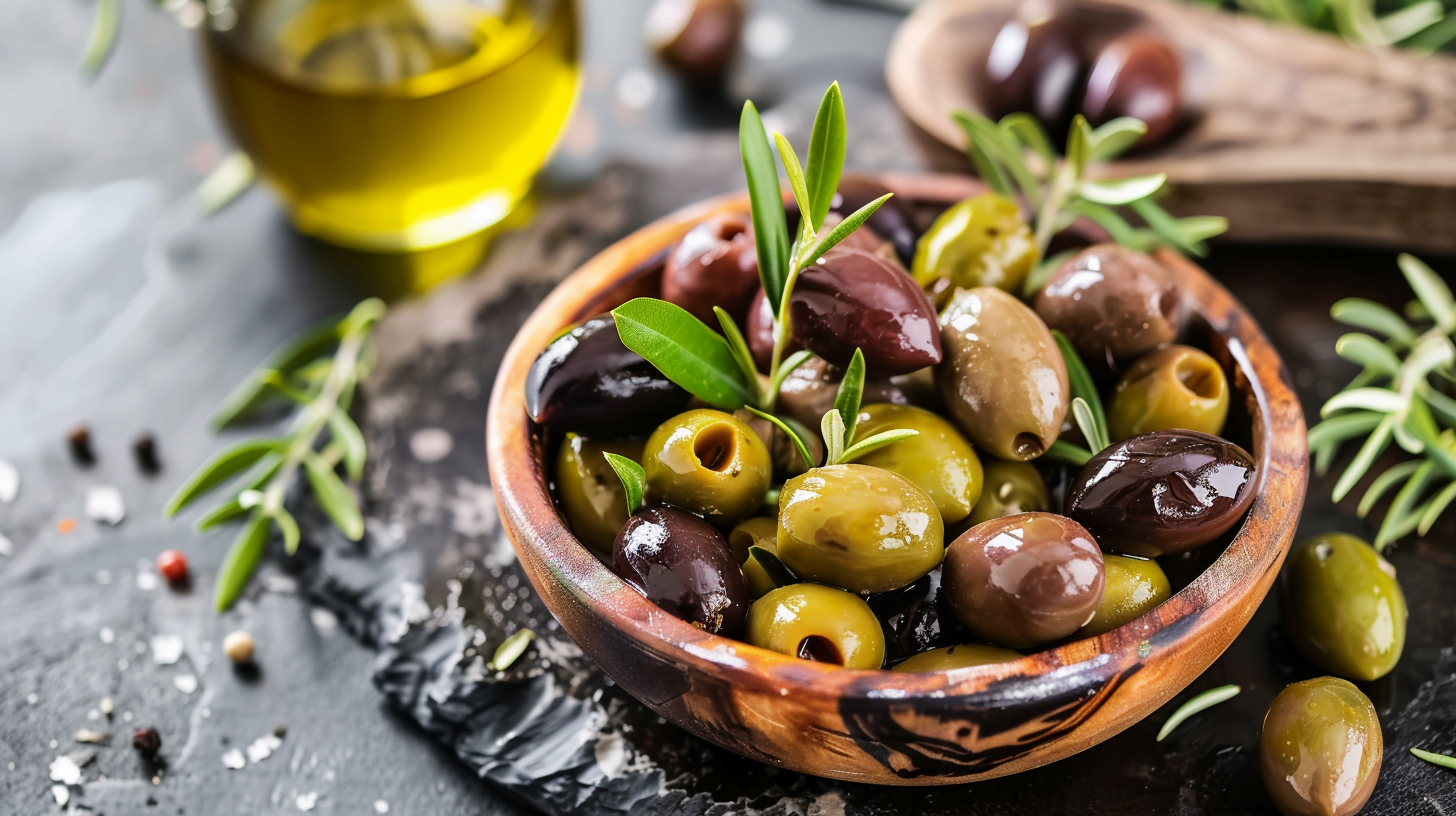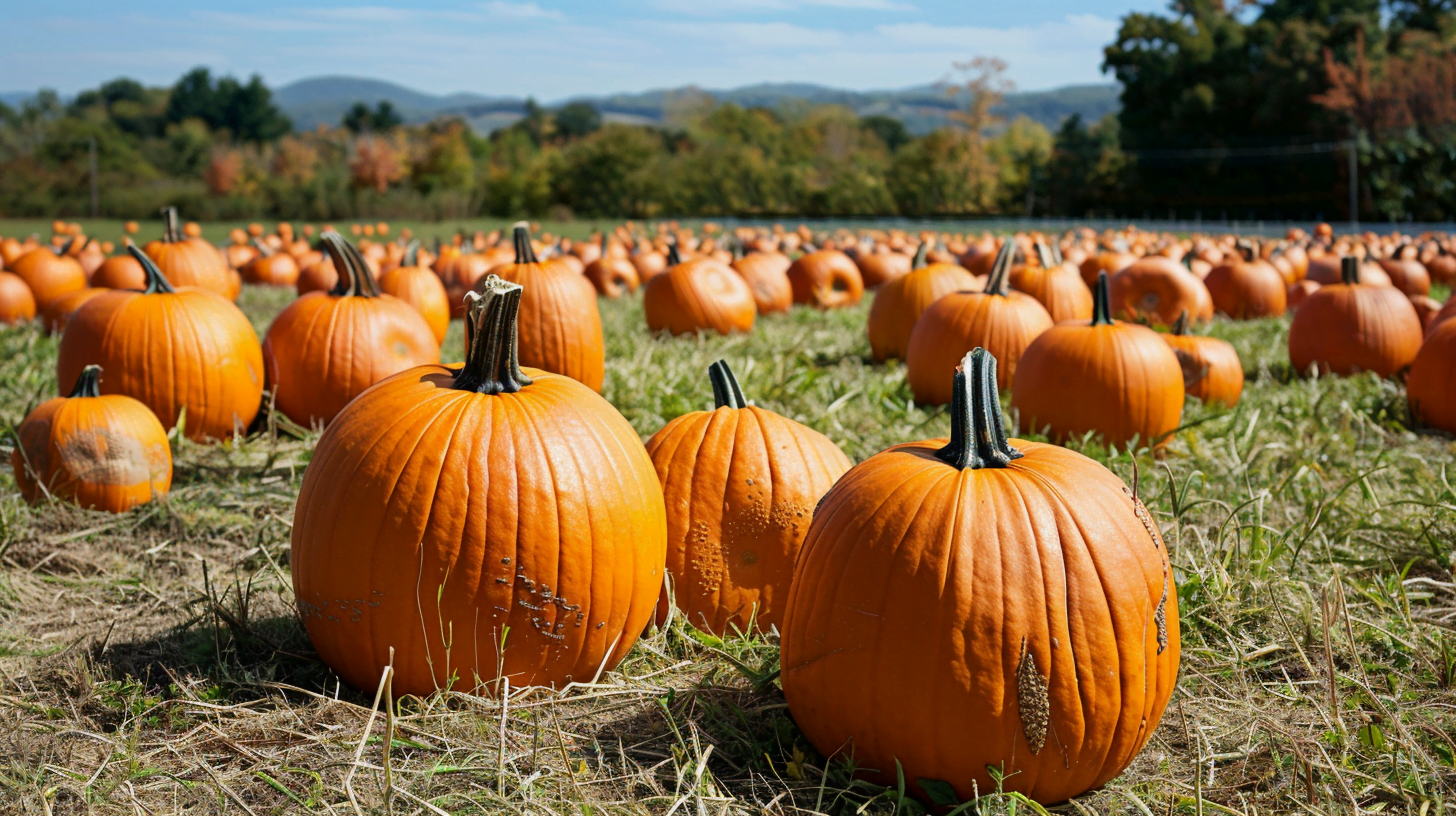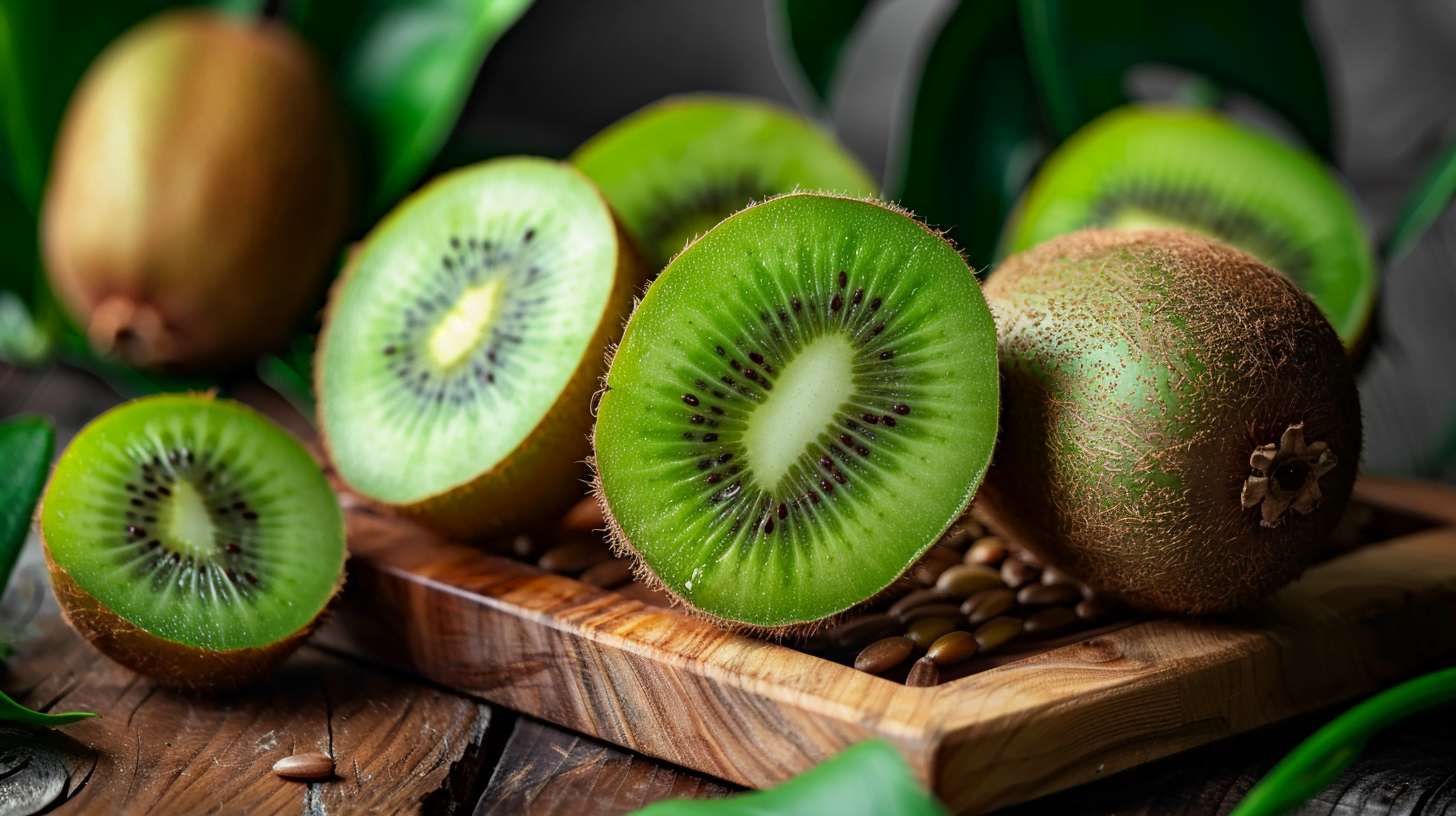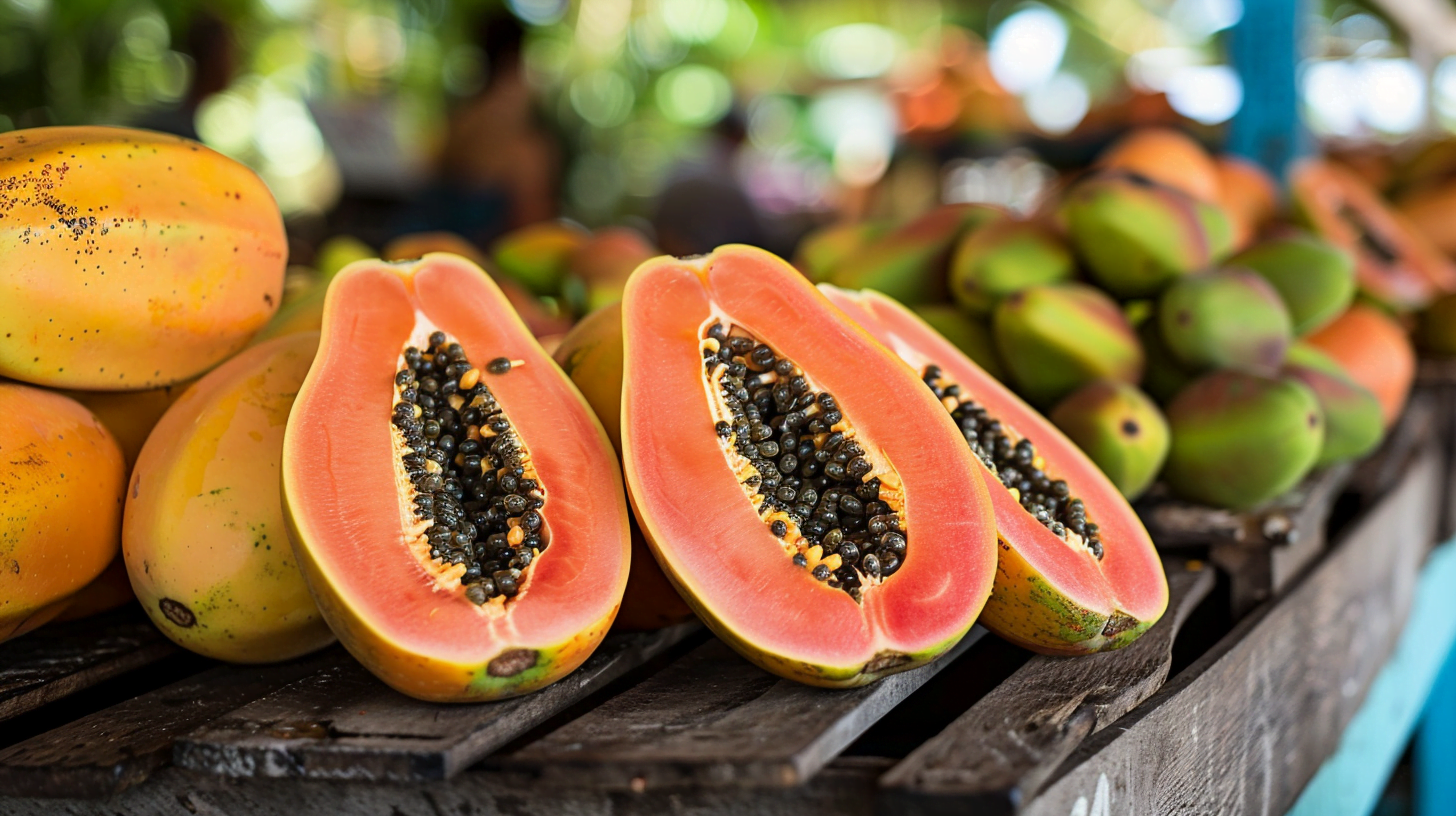Introduction
Olives are a staple ingredient in many cuisines worldwide, but have you ever wondered which country produces the most olives and reigns supreme in olive production? This comprehensive guide will explore the top olive-producing countries, delving into their unique cultivation methods, climatic conditions, and the economic significance of this ancient crop.
Olive cultivation has been an integral part of Mediterranean cultures for thousands of years, with evidence dating back to ancient Greece and Rome. Today, the demand for olives and olive oil continues to soar, driven by their versatility in cooking, health benefits, and cultural significance.
The Olive Production Powerhouses
Spain: The Undisputed Leader
Spain is the undisputed leader in olive production, accounting for approximately 25% of the world’s total output. This Mediterranean nation has a long-standing tradition of olive cultivation, with the practice dating back to the Phoenician and Roman eras.
The southern region of Andalusia is Spain’s olive-growing heartland, responsible for producing over 80% of the country’s olives. Other major producing regions include Catalonia, Extremadura, and Valencia.
Spain is renowned for its diverse range of olive varieties, including:
- Picual: Known for its high oil yield and robust flavor, the Picual olive is widely cultivated in Jaén, a province within Andalusia.
- Arbequina: This variety is prized for its delicate flavor and high-quality oil, making it a popular choice for premium extra virgin olive oils.
- Manzanilla: The Manzanilla olive is a beloved table olive variety, known for its distinctive almond shape and rich, nutty flavor.
Italy: A Tradition Steeped in History
Italy is another major player in the olive production arena, with a rich heritage that dates back to ancient Roman times. The country’s diverse landscapes and microclimates contribute to the cultivation of a wide range of olive varieties.
The southern regions of Puglia, Calabria, and Sicily are the primary olive-growing hubs in Italy. These areas boast ideal climatic conditions and a long-standing tradition of olive cultivation.
Some of Italy’s most renowned olive varieties include:
- Leccino: Originating from Tuscany, the Leccino olive is prized for its mild flavor and high oil yield, making it a popular choice for extra virgin olive oil production.
- Frantoio: This Tuscan variety is known for its robust, fruity flavor and is widely used in the production of high-quality extra virgin olive oils.
- Coratina: Hailing from Puglia, the Coratina olive is renowned for its intense flavor and high polyphenol content, contributing to its exceptional health benefits.
Greece: The Birthplace of Olive Cultivation
Greece is often referred to as the birthplace of olive cultivation, with evidence of olive groves dating back to the Bronze Age. Olives and olive oil have played a significant role in Greek culture, mythology, and cuisine for millennia.
The island of Crete is a major olive-producing region, known for its ancient olive groves and unique microclimates. Other important producing areas include the Peloponnese peninsula and the Aegean Islands.
Some of Greece’s most famous olive varieties include:
- Koroneiki: This small, robust olive is widely cultivated throughout Greece and is prized for its high oil yield and fruity flavor.
- Kalamata: Named after the city of Kalamata in the Peloponnese, this variety is primarily used for table olives and is renowned for its distinctive almond shape and rich, fruity flavor.
- Chalkidiki: Originating from the Chalkidiki peninsula, this variety is known for its large size, meaty texture, and mild flavor, making it a popular choice for table olives.
Factors Influencing Olive Production
Climate and Soil Conditions
Olive trees thrive in Mediterranean climates characterized by hot, dry summers and mild, rainy winters. They require a minimum of 200 frost-free days per year and an average annual temperature between 15°C and 20°C (59°F and 68°F).
Soil quality and drainage are crucial factors in olive cultivation. Olive trees prefer well-drained, slightly alkaline soils with a pH range of 6.5 to 8.5. Sandy loam or clay loam soils with good water retention and aeration are ideal for optimal growth and fruit production.
Cultivation Techniques
Traditional olive farming methods have been passed down through generations, with many producers still relying on age-old practices. However, modern cultivation techniques have also been adopted to improve yields and efficiency.
Irrigation: While olive trees are drought-tolerant, supplemental irrigation is often necessary, especially during the fruit development stage. Drip irrigation and deficit irrigation techniques are commonly used to optimize water usage and promote fruit quality.
Pruning: Regular pruning is essential for maintaining the tree’s shape, promoting air circulation, and ensuring optimal fruit production. Pruning techniques vary depending on the region and the desired tree architecture.
Harvesting: Olives can be harvested manually or mechanically, with each method having its advantages and disadvantages. Manual harvesting is labor-intensive but gentle on the trees, while mechanical harvesting is more efficient but can cause damage if not done properly.
Many producers are adopting sustainable and organic farming practices, such as integrated pest management, cover cropping, and the use of organic fertilizers, to reduce their environmental impact and produce high-quality, eco-friendly olives.
Economic and Trade Factors
Olive production plays a significant role in the economies of major producing countries. Spain, Italy, and Greece are not only major producers but also major exporters of olives and olive oil.
The European Union (EU) is the largest producer and consumer of olive oil, accounting for approximately 70% of global production and consumption. The EU has implemented various regulations and quality standards to protect and promote the olive oil industry.
Global demand for olives and olive oil has been steadily increasing, driven by factors such as health awareness, culinary trends, and the growing popularity of Mediterranean diets. This has led to increased trade and export opportunities for major producing countries.
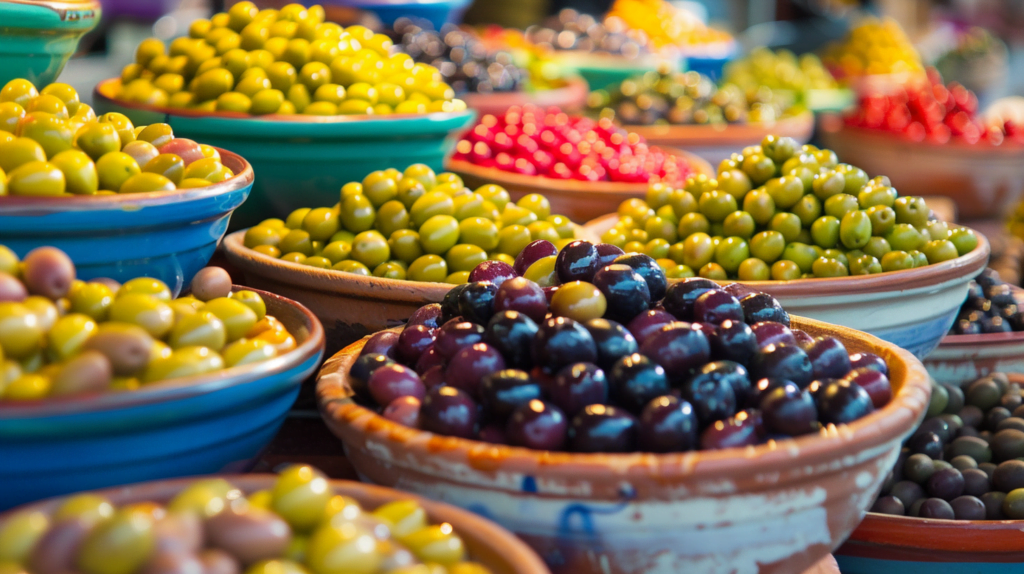
Beyond Production: Olive Oil and Table Olives
Olive Oil Production and Varieties
Olive oil production is a complex process that involves several stages, from harvesting to extraction and bottling. The most common extraction methods include:
- Cold-pressing: This traditional method involves crushing the olives and extracting the oil using mechanical presses or centrifuges without the use of heat or chemical treatments.
- Solvent extraction: This industrial method uses solvents to extract the remaining oil from the olive pomace (residue) after the initial pressing.
Olive oil is classified into several categories based on its quality and production method:
- Extra Virgin Olive Oil (EVOO): The highest quality olive oil, obtained solely through mechanical means without chemical treatment or excessive heat. EVOO has a distinct flavor, aroma, and high levels of antioxidants.
- Virgin Olive Oil: Similar to EVOO but with slightly higher acidity levels and a less intense flavor.
- Refined Olive Oil: Obtained through chemical refining processes to remove impurities and undesirable flavors. It has a neutral taste and is often blended with virgin olive oils.
Olive oil is renowned for its numerous health benefits, including its high content of monounsaturated fatty acids, antioxidants, and anti-inflammatory properties. It is widely used in Mediterranean cuisines and is a staple ingredient in many dishes.
Table Olives and Curing Methods
Table olives, also known as edible olives, are olives that have undergone various curing processes to remove their natural bitterness and make them palatable for consumption. The most common curing methods include:
- Brine-curing: Olives are soaked in a salt brine solution, which helps remove their bitterness and preserves their texture and flavor.
- Dry-curing: Olives are packed in salt or dry-cured with herbs and spices, resulting in a wrinkled appearance and intense flavor.
- Lye-curing: Olives are treated with a lye solution to remove their bitterness, followed by a brine-curing process.
Table olives come in a wide variety of shapes, sizes, and flavors, each with its unique characteristics. Some popular varieties include:
- Kalamata: These Greek olives are known for their rich, fruity flavor and distinctive almond shape.
- Manzanilla: Originating from Spain, these green olives have a mild, slightly nutty flavor and a firm texture.
- Nicoise: These small, black olives from France are known for their intense, salty flavor and are often used in salads and tapenade.
Table olives are an integral part of many culinary traditions, used in appetizers, salads, pizzas, and as a flavorful addition to various dishes. They are also celebrated for their cultural significance, particularly in Mediterranean regions.
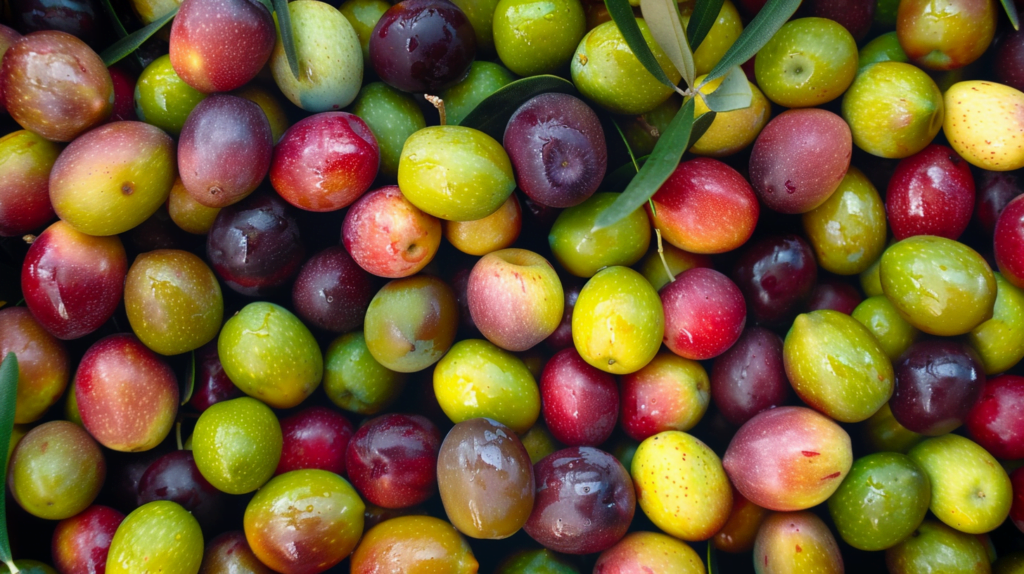
Sustainability and the Future of Olive Production
Environmental Challenges and Solutions
Olive production faces several environmental challenges, including climate change, water scarcity, and soil degradation. Rising temperatures, erratic rainfall patterns, and prolonged droughts can significantly impact olive yields and quality.
To address these challenges, producers are adopting sustainable practices such as:
- Water conservation: Implementing efficient irrigation systems, such as drip irrigation and deficit irrigation, to optimize water usage.
- Integrated pest management: Using biological control methods and natural predators to manage pests, reducing the reliance on chemical pesticides.
- Regenerative agriculture: Adopting practices that improve soil health, such as cover cropping, crop rotation, and the use of organic fertilizers.
Additionally, research is being conducted to develop drought-resistant and climate-resilient olive varieties, ensuring the long-term sustainability of olive production.
Technological Advancements
The olive industry is embracing technological advancements to improve efficiency, productivity, and sustainability. Some of the key technologies being adopted include:
- Precision agriculture: Using sensors, drones, and satellite imagery to monitor crop health, soil conditions, and water usage, enabling data-driven decision-making.
- Automation: Implementing automated systems for tasks such as pruning, harvesting, and sorting, reducing labor costs and increasing efficiency.
- Traceability systems: Utilizing blockchain and other digital technologies to track the origin and journey of olives and olive oil, ensuring transparency and quality control.
These technological advancements not only improve productivity but also contribute to sustainable practices by optimizing resource usage and reducing waste.
Emerging Olive-Producing Regions
While the Mediterranean region has traditionally dominated olive production, several new regions are emerging as potential olive-growing hotspots. These include:
- Australia: With its Mediterranean-like climate in certain regions, Australia has seen a surge in olive cultivation, particularly in South Australia and Victoria.
- Chile: The central and northern regions of Chile offer ideal conditions for olive cultivation, and the country is rapidly expanding its olive production.
- South Africa: The Western Cape region of South Africa has a thriving olive industry, with a focus on high-quality extra virgin olive oil production.
As climate patterns shift and new regions become suitable for olive cultivation, the global olive production landscape may undergo significant changes in the coming decades.
Conclusion
The world of olive production is a fascinating tapestry of ancient traditions, cultural heritage, and modern innovations. From the sun-drenched groves of Spain and Italy to the historic olive terraces of Greece, each region contributes its unique flavors and techniques to this age-old crop.
As global demand for olives and olive oil continues to rise, the industry faces challenges in terms of sustainability, climate change, and resource management. However, with the adoption of sustainable practices, technological advancements, and the exploration of new olive-growing regions, the future of olive production remains promising.
Whether you’re a culinary enthusiast, a health-conscious consumer, or simply appreciate the rich cultural significance of olives, this comprehensive guide has provided you with a deep understanding of the world’s top olive-producing nations and the intricate tapestry that surrounds this ancient fruit.
So, the next time you savor the rich, fruity flavor of a high-quality olive oil or indulge in a succulent Kalamata olive, take a moment to appreciate the journey it has undertaken, from the sun-drenched groves to your plate, and the dedication of the farmers and producers who have brought this culinary treasure to your table.
